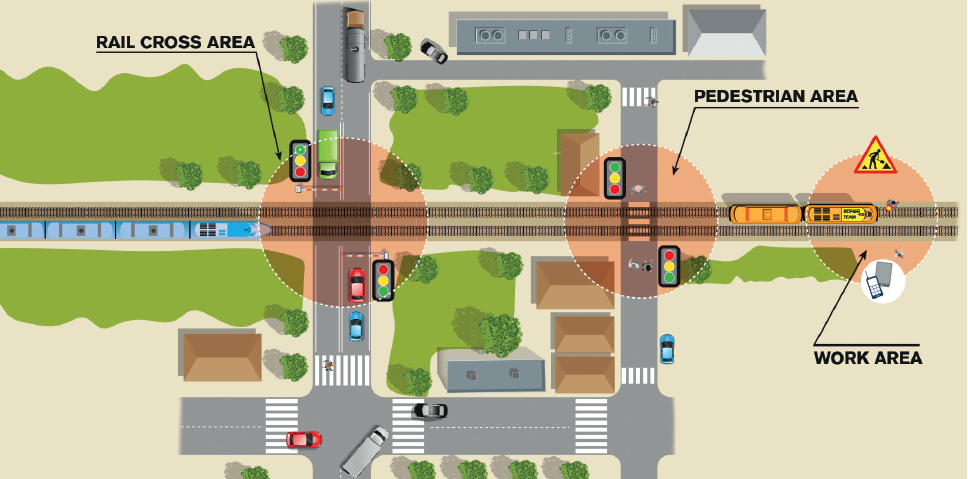SCOTT UC20 (Trustable Warning System for Critical Areas) aims to reinforce the critical areas in the railway domain, for instance the level crossing or working areas with operators located near the track. In addition, this WP increases the interoperability between the automotive and rail domain. For this purpose, the wireless communications between vehicles to anything (V2X) are implemented, gathering data from different sensors and providing information to external users, such pedestrians and drivers. An additional target is to link the rail with the automotive domain, as a proposal for the connected car in the future.
Nowadays, the level crossing alert is based on a trigger located on the track, mechanical or electronic, which activate the barriers and signals indicating the approaching of the train and it avoids the occupation of the track by vehicles or pedestrians. This mechanism is limited, due to its incompatibilities with other technologies and its non-flexibility to adapt it to other critical areas, such working areas. In addition, this system is analogical, and it does not allow any modifications from its initial design and setup, changes due to modifications on the speed or composition. In general, the current systems deployed for the critical areas shows a lack of safety in some situations.
The solution proposed for the UC20 is based on the wireless communication between the train and the critical area. This communication is in both directions, the critical area provides data about the possible track obstacle and the train dynamic information. Taking this data, the system provides safety answer for each situation. On the other hand, the use of wireless connectivity allows its integration with other domains, such the automotive one.
During the second year of the SCOTT project, the V2X communications have been tested in a real environment at INDRA installations achieving successful results. Moreover, the solution obtained from the UC20 will be tested in a real scenario in Germany.
More information on SCOTT, its technologies developed and publications available can be found in https://scottproject.eu.

